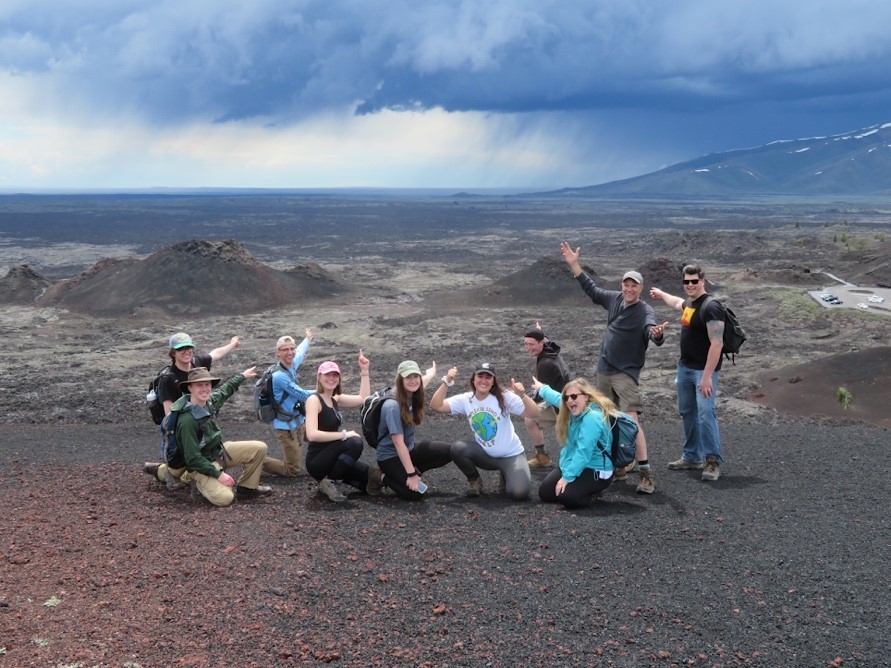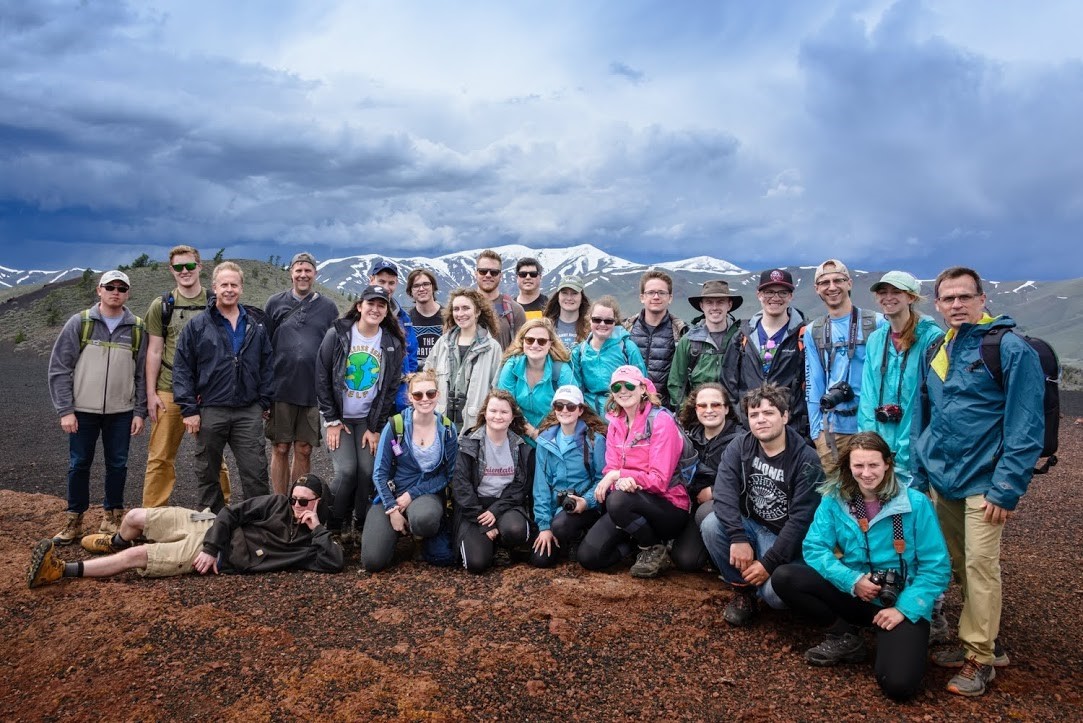- Apply
- Visit
- Request Info
- Give
Idaho-Wyoming section of the Rocky Mountains May 19-31, 2022
EES 271: Environmental Earth Science Field Course to Idaho and Wyoming
2 Pre-requisite courses (EES 104; and EES 130 or EES 224)
Campus Meetings: 4/6 – 5/3 Tuesdays 05:30 pm - 06:15 pm Science Bldg. 232
Cost: Approximately $2000
Professors: Dickson Cunningham and Peter Drzewiecki
cunninghamw@easternct.edu
drzewieckip@easternct.edu
Earth Science is best learned in the field. The Idaho-Wyoming section of the Rocky Mountains is one of America's most geologically spectacular regions and is a playground for earth and environmental scientists because of its geological diversity.

The national parks of Wyoming and Idaho (Yellowstone, Grand Teton, Craters of the Moon, Fossil Butte) contain world-class geological features, a variety of mountain, plateau, steppe and desert landscapes, an impressive array of volcanic and geothermal activity, earthquake-prone faults and superbly exposed crustal structures responsible for mountain building, rifting and caldera collapse. The stratigraphy also hosts important fossil and energy resources. The region is host to diverse ecosystems, great natural beauty and many examples of how geology and tectonics influence societal development and natural resource availability.
As part of the Department of Environmental Earth Science’s efforts to integrate additional field training and global field experiences into its undergraduate curriculum, a field excursion is proposed for spring, 2022 to the Idaho and western Wyoming regions of the Rocky Mountains. This trip is part of an EES elective course (EES 271) that involves 5 pre-departure meetings and the field course. Employers and graduate schools are increasingly looking for candidates with strong field skills and diverse geological experience. This trip is designed to provide that training and experience to further our students’ understanding of the Earth, develop their skills base, and improve graduate employability. The trip embeds valuable student skills development including careful observation, data analysis, communication, teamwork and critical thinking. The Department has successfully run this trip twice before and the leaders are very familiar with the trip itinerary, logistics, most important trip locations, major discussion topics and key learning outcomes.

The trip will focus on a variety of geological and environmental themes including the extensional tectonics of the Basin and Range Province, contractional structures of the Cordilleran Fold-and-Thrust Belt in Idaho’s Lost River Range, Miocene-Recent volcanic features of the Snake River Plain, geothermal and volcano-tectonic highlights of the Yellowstone Hotspot and caldera systems, Precambrian basement rocks and lower Paleozoic stratigraphy of the Grand Teton range, Eocene lakes and paleontological lagerstätten of Wyoming, and Late Cenozoic-Recent faulting, tectonic geomorphology and earthquake geology of the Intermountain Seismic Belt. Other themes on the trip include geothermal energy resources, the coal and shale gas industry, geotourism, and geological influences on Native American culture and pioneer travel, exploration and settlement of the American West along the Idaho part of the Oregon Trail.

